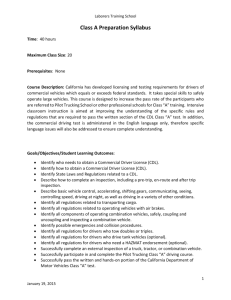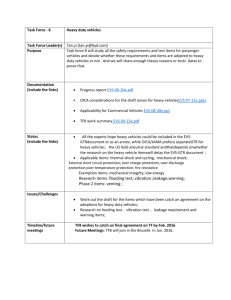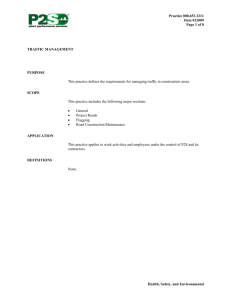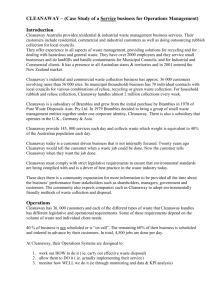Presentation D
advertisement
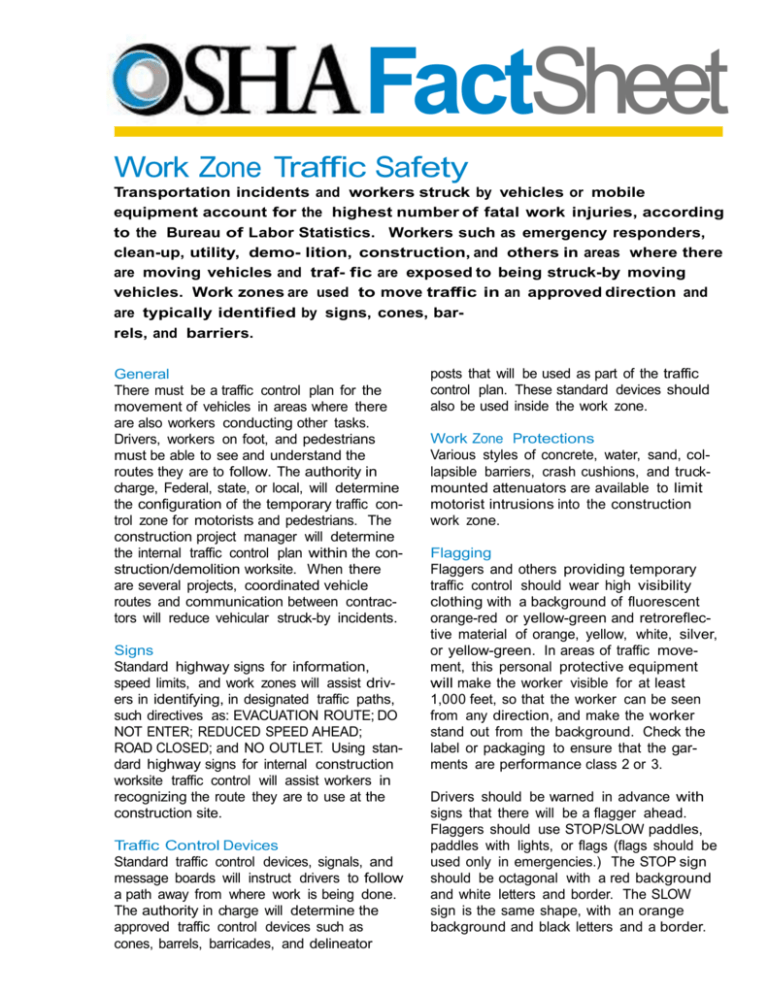
FactSheet Work Zone Traffic Safety Transportation incidents and workers struck by vehicles or mobile equipment account for the highest number of fatal work injuries, according to the Bureau of Labor Statistics. Workers such as emergency responders, clean-up, utility, demo- lition, construction, and others in areas where there are moving vehicles and traf- fic are exposed to being struck-by moving vehicles. Work zones are used to move traffic in an approved direction and are typically identified by signs, cones, barrels, and barriers. General There must be a traffic control plan for the movement of vehicles in areas where there are also workers conducting other tasks. Drivers, workers on foot, and pedestrians must be able to see and understand the routes they are to follow. The authority in charge, Federal, state, or local, will determine the configuration of the temporary traffic control zone for motorists and pedestrians. The construction project manager will determine the internal traffic control plan within the construction/demolition worksite. When there are several projects, coordinated vehicle routes and communication between contractors will reduce vehicular struck-by incidents. Signs Standard highway signs for information, speed limits, and work zones will assist drivers in identifying, in designated traffic paths, such directives as: EVACUATION ROUTE; DO NOT ENTER; REDUCED SPEED AHEAD; ROAD CLOSED; and NO OUTLET. Using standard highway signs for internal construction worksite traffic control will assist workers in recognizing the route they are to use at the construction site. Traffic Control Devices Standard traffic control devices, signals, and message boards will instruct drivers to follow a path away from where work is being done. The authority in charge will determine the approved traffic control devices such as cones, barrels, barricades, and delineator posts that will be used as part of the traffic control plan. These standard devices should also be used inside the work zone. Work Zone Protections Various styles of concrete, water, sand, collapsible barriers, crash cushions, and truckmounted attenuators are available to limit motorist intrusions into the construction work zone. Flagging Flaggers and others providing temporary traffic control should wear high visibility clothing with a background of fluorescent orange-red or yellow-green and retroreflective material of orange, yellow, white, silver, or yellow-green. In areas of traffic movement, this personal protective equipment will make the worker visible for at least 1,000 feet, so that the worker can be seen from any direction, and make the worker stand out from the background. Check the label or packaging to ensure that the garments are performance class 2 or 3. Drivers should be warned in advance with signs that there will be a flagger ahead. Flaggers should use STOP/SLOW paddles, paddles with lights, or flags (flags should be used only in emergencies.) The STOP sign should be octagonal with a red background and white letters and border. The SLOW sign is the same shape, with an orange background and black letters and a border. Lighting Flagger stations should be illuminated. Lighting for workers on foot and equipment operators is to be at least 5 foot-candles or greater. Where available lighting is not sufficient, flares or chemical lighting should be used. Glare affecting workers and motorists should be controlled or eliminated. Training Flaggers should be trained/certified and use the signaling methods required by the authority in charge. Workers on foot, equipment operators, and drivers in internal work zones need to know the routes that construc- tion vehicles will use. Equipment operators and signal persons need to know the hand signals used on the worksite. Operators and workers on foot need to know the visibility limits and the “blind spots” for each vehicle on site. Workers on foot should wear high visibility safety garments designated as class 1, 2, or 3. Workers should be made aware of the ways in which shiftwork and nightwork may affect their performance. Driving Seat belts and rollover protection should be used on equipment and vehicles as stated by the manufacturer. This is one in a series of informational fact sheets highlighting OSHA programs, policies or standards. It does not impose any new compliance requirements. For a comprehensive list of compliance requirements of OSHA standards or regulations, refer to Title 29 of the Code of Federal Regulations. This information will be made available to sensory impaired individuals upon request. The voice phone is (202) 693-1999; teletypewriter (TTY) number: (877) 889-5627. For more complete information: U.S. Department of Labor www.osha.gov 321-OSHA DOC 9/2005 (800)





